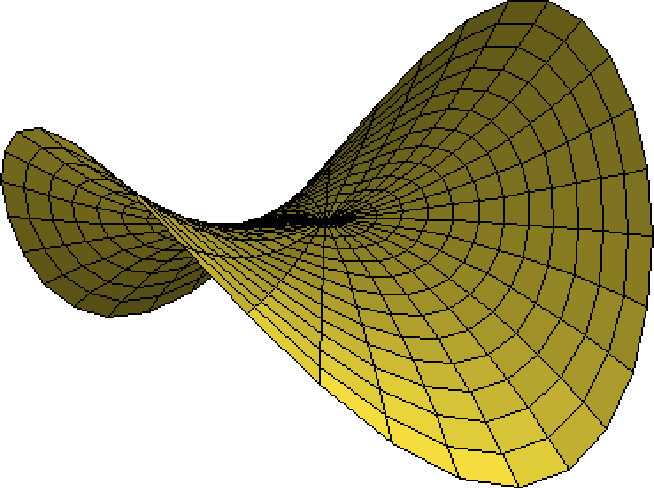 |
Figure 1 An AMO operator for a homogeneous medium with velocity equal to 2 km/s. The offset is 2 km and the input normal-moveout (NMO) corrected time is 2 s.
For cost reasons, seismic surveys are designed so that multiple geophone arrays are deployed to record sound waves, typically emanating from a single source. These geophones, in a 3-D survey, are rarely aligned along a single straight line that passes through the source. This is the case in most 3-D marine, as well as land, survey designs. As a result, the source-receiver azimuth is not constant and in typical marine data, can range between -45 to 45 degrees, where 0 azimuth is the direction of the ship motion Biondi et al. (1998). Most prestack imaging algorithms (i.e., dip moveout and prestack migration) are theoretically designed to work with data acquired along a single source-receiver azimuth. Azimuth variation is often ignored and seismic traces are binned, after normal-moveout (NMO) correction, into a regularly sampled data set in offset and Common midpoint (CMP). Though, for isotropic homogeneous media, such binning has no bearing on reflections from horizontal events, ignoring the azimuth variation can harm reflections from dipping events Biondi et al. (1998), resulting in the attenuation of such reflections when partial stacking is applied to reduce the volume of the data set Hanson and Witney (1995).
Biondi et al. (1998) introduced azimuth moveout correction (AMO) as a single operator to correct for azimuth variations in homogeneous isotropic media. They analytically derived the AMO operator, and used it in a Kirchhoff-type of implementation on multi-azimuth seismic data sets. Though the AMO operator had a 3-D structure, it had an overall small aperture, thus the Kirchhoff implementation of AMO is relatively cheap. Figure 1 shows an AMO operator in homogeneous media. It is clearly 3-D in structure and has a general skewed saddle shape.
 |
Like the DMO operator, the AMO operator is applied after NMO correction. Despite the simplicity of the homogeneous-medium AMO operator and its application, the earth subsurface is rarely homogeneous. Velocity increase with depth is very common in the subsurface, and an important question is how much of an error can be attributed to ignoring such vertical velocity variation. Using the 3-D SEG/EAEG salt-dome model, Biondi (1998) shows that the homogeneous AMO operator produces reasonable results in smooth vertical velocity variations. Is this a general conclusion or only holds for the cases he tested?
Through the combined action of gravity and sedimentation, velocity variation with depth represents the most important first-order inhomogeneity in the Earth subsurface. This is one reason why time migration works well in so many places. Therefore, studying the AMO operator for such 1-D models can be useful in many parts of the Earth, and since the AMO operator is generally small, the v(z) AMO operator might be useful even in relatively complex areas.
In this paper, we will numerically construct the AMO operator for vertically inhomogeneous media, as well as observe how the operator shape is influenced by vertical inhomogeneity. Next, we will generate the residual AMO operator constructed by cascading a forward homogeneous-medium AMO operator and an inverse v(z)-medium AMO operator. The size and shape of the residual operator provides us with valuable information regarding the impact of vertical inhomogeneity on AMO. The smaller the residual operator the lesser the impact of vertical velocity gradients on AMO. Examples will include three types of vertical velocity variations: linear increase as a function of depth, a low velocity layer embedded in an overall increase in velocity with depth, and a high velocity layer embedded in an increase in velocity with depth. The last example is similar to what can be observed in the North Sea, as a result of the Austin Chalk layer.